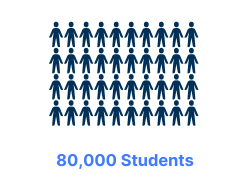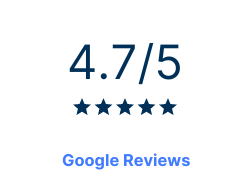
Proficiency in programming languages can significantly elevate the skill set of professionals across various domains. Python, a versatile and widely-used programming language, holds immense potential for students with diverse backgrounds, including those well-versed in SQL, Power BI, and Excel.
This article delves into the ways in which Python can complement and augment the capabilities of individuals from these distinct streams, enhancing their proficiency and opening doors to new opportunities.
Python's Synergy with SQL
✅ Data Manipulation: SQL is renowned for its efficiency in querying relational databases, but its scope is primarily centered around structured data retrieval. Python, particularly when coupled with the potent pandas library, introduces a powerful suite of tools for data manipulation and transformation.
In scenarios where complex data restructuring is required, Python's intuitive syntax and versatile functions make tasks that would otherwise be cumbersome in SQL significantly more manageable.
✅ Database Integration: Python boasts robust connectivity with a range of databases, enabling effortless retrieval, updating, and manipulation of data through the integration of SQL commands within Python scripts
✅ Database Automation: Python's versatility extends beyond data manipulation to encompass the realm of database management. Tasks such as automating database backups, executing migrations, and performing data cleansing can be effortlessly streamlined through Python scripts.
This automation not only saves time but also reduces the potential for human error, enhancing the overall efficiency of database-related operations.
Elevating Power BI with Python
✅ Data Preprocessing: Before visualising data in Power BI, the need often arises for data preprocessing and transformation. Python emerges as a versatile solution for executing these tasks effectively and efficiently.
✅ Advanced Analytics: While Power BI provides a robust platform for data visualisation, Python introduces a new dimension through its libraries like scikit-learn and TensorFlow.
These libraries empower students to delve into advanced analytics, machine learning, and data science tasks. Python enables the creation of complex models that can be seamlessly integrated into Power BI, enriching the insights derived from data visualisations.
✅ Custom Visualisations: The standard visualisations offered by Power BI cater to various needs, but Python's visualisation libraries such as Matplotlib and Seaborn bring an element of customisation and creativity.
Students can design bespoke visualisations that align precisely with the requirements of their Power BI reports, fostering a deeper understanding of data trends and patterns.
✅ API Integration: Python's prowess extends to interacting with a myriad of APIs. Students can harness Python's capabilities to retrieve data from diverse sources, subsequently visualising this information within Power BI.
This integration allows for a dynamic and comprehensive presentation of data, fostering more informed decision-making processes.
Empowering Excel Proficiency with Python
✅ Automation: Excel is a cornerstone of data analysis and reporting, but repetitive tasks can impede efficiency. Python, with libraries like openpyxl and pandas, can streamline and automate a range of Excel operations.
From data entry to report generation, Python scripts can handle these tasks seamlessly, freeing up time for more valuable analysis.
✅ Data Analysis: While Excel serves as a foundation for basic data analysis, Python elevates the possibilities with its extensive array of libraries and functions, catering to intricate and multifaceted analyses.
✅ Handling Large Datasets: Excel's limitations in handling extensive datasets are well-documented. Python, however, shines in this regard, especially when coupled with the pandas library. Its capacity to efficiently manage and process vast amounts of data provides students with the confidence to tackle larger-scale projects and analyses.
✅ Integration: Python's integrative capabilities extend Excel's functionality beyond its native scope. By leveraging Python's connectivity with databases, web applications, and other tools, students can bridge the gap between Excel and various platforms, enhancing their ability to manipulate, analyse, and present data.
Achieving Success by Embracing the Python Odyssey
In the realm of data analysis, visualisation, and automation, Python acts as a bridge between different domains. It enriches the abilities of those familiar with SQL, Power BI, and Excel, inviting them to embark on an odyssey of skill enhancement, innovation, and continuous learning. As technology propels us forward, the fusion of Python with these established disciplines opens doors to new horizons, transforming students into versatile experts capable of driving positive change in their fields.
By embracing Python's potential, professionals open themselves to a world of endless exploration, where creative solutions flourish, and traditional boundaries fade away. As we conclude this journey through Python's role in enhancing the capabilities of SQL, Power BI, and Excel enthusiasts, remember that the real journey has just begun. Embrace Python's power, cultivate your skills, and shape the future with confidence and curiosity.
So while each of these streams (SQL, Power BI, and Excel) has its own strengths, learning Python can provide complementary skills that enhance and expand the capabilities of professionals in these areas. Whether it's for data manipulation, advanced analytics, or automation, Python can be a valuable tool to have in one's toolkit. Explore our Python courses starting with Beginner, Intermediate, and Advanced courses today.
 phone
phone
 email
email
 enquiry
enquiry
























